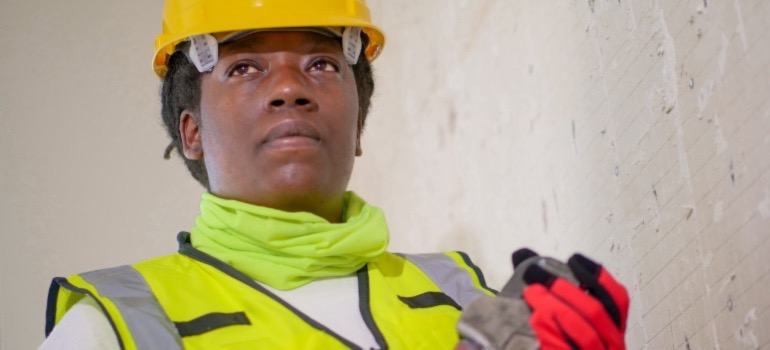The Importance of Sewer Rodding
As a homeowner, it is essential to understand the importance of regular sewer rodding and maintenance to ensure the smooth operation of your plumbing system. By taking proactive measures and addressing any issues promptly, you can prevent costly and inconvenient sewer backups.
Understanding Sewer Rodding
Sewer rodding is the process of clearing blockages and obstructions in your sewer lines using specialized tools, such as a sewer snake or auger. The sewer snake is a long, flexible tool that can reach deep into the sewer pipes to break up clogs and debris.
This process is crucial as accumulated debris, grease, tree roots, and other foreign objects can obstruct the free flow of wastewater through your sewer lines. If left unaddressed, these blockages can lead to sewage backups and potential damage to your home’s plumbing system.
Signs That Your Sewer Lines Need Rodding
It is important to be aware of the signs that indicate your sewer line needs to be rodded out. By recognizing these signs early on, you can take the necessary steps to prevent major plumbing issues.
Here are some common signs that your sewer lines may be in need of rodding:
- Slow draining sinks, showers, or bathtubs
- Gurgling noises coming from your pipes
- Unpleasant odors coming from drains
- Sewage backups or water pooling in your basement or yard
- Multiple drains clogging simultaneously

Once the blockage has been identified, the plumber will use a sewer snake or auger to break up the debris and clear the obstruction.
The Sewer Rodding Process
When hiring a professional plumber to perform sewer rodding, they will follow a systematic process to ensure effective results. Here is a breakdown of the typical sewer rodding process:
Inspection:
The plumber will inspect your sewer lines using a video camera to identify the location and nature of the blockage. This step helps them determine the most appropriate approach for clearing the obstruction.
Clearing the Blockage:
Once the blockage has been identified, the plumber will use a sewer snake or auger to break up the debris and clear the obstruction. The length and size of the sewer snake used will depend on the severity and location of the blockage.
Hydro Jetting (Optional):
In some cases, a professional hydro jetting service may be necessary to thoroughly clean the inside of your sewer pipes. This process involves using high-pressure water to flush out any remaining debris and buildup along the walls of the pipes.
Inspection and Testing:
After the blockage has been cleared, the plumber will perform another video inspection to ensure the sewer lines are free of any remaining debris or obstructions. This step helps confirm the success of the rodding process.
Benefits of Regular Sewer Rodding
Maintaining a regular sewer rodding schedule offers several benefits for homeowners:
Prevents Costly Repairs:
Regular rodding helps prevent major sewer line issues that can lead to expensive repairs. By addressing clogs and blockages early on, you can avoid the need for extensive excavation or replacement of damaged pipes.
Extends the Lifespan of Your Sewer System:
Proper maintenance, including regular rodding, can extend the lifespan of your sewer system. Removing debris and preventing buildup ensures the smooth flow of wastewater, reducing the strain on your pipes and minimizing the risk of premature deterioration.
Reduces the Risk of Sewer Backups:
Clogged sewer lines are prone to backups, which can lead to extensive water damage in your home. Regular rodding helps prevent these sewer backup emergencies, protecting your property and belongings from potential harm.
Maintains Proper Drainage:
A well-maintained sewer system ensures proper drainage, preventing excess water from pooling in your yard or basement. This helps maintain a dry and healthy living environment.
Preserves Water Quality:
Blockages in sewer lines can cause contaminants to seep into groundwater, affecting the quality of your water supply. Regular rodding helps prevent these contaminants from entering your water system, preserving water quality for your household.

Look for professionals who specialize in sewer services and possess the necessary knowledge and skills to handle any issues that may arise.
Finding a Reliable Plumbing Professional
When it comes to sewer rodding, it is crucial to hire a reliable and reputable plumbing professional. Consider the following factors when selecting a plumber for your sewer maintenance needs:
Experience and Expertise:
Choose a plumber with extensive experience in sewer rodding and maintenance. Look for professionals who specialize in sewer services and possess the necessary knowledge and skills to handle any issues that may arise.
Proper Licensing and Insurance:
Ensure that the plumber you hire holds the appropriate licenses and insurance coverage. This protects both you and the plumber in case of any accidents or damages during the rodding process.
References and Reviews:
Read customer reviews and ask for references from previous clients. A reputable plumber will have positive reviews and be willing to provide references to demonstrate their track record of satisfied customers.
Transparent Pricing:
Obtain multiple quotes and ensure the plumber provides a detailed breakdown of the costs involved. Beware of unusually low prices, as they may indicate subpar service or additional hidden charges.
Maintaining a Sewer Rodding Schedule
Once you have cleared any existing sewer blockages, it is essential to establish a regular rodding schedule to prevent future issues. Speak with your plumber to determine the appropriate frequency for rodding based on your specific circumstances.
Factors that can influence the frequency of rodding include:
- Age of the sewer system
- Surrounding vegetation and tree roots
- Living in an area prone to heavy rainfall
- Usage patterns and household size
To Conclude
Regular sewer rodding is an essential aspect of maintaining a well-functioning plumbing system and protecting your home from sewer backups and water damage. By understanding the process and benefits of sewer rodding, you can make informed decisions as a homeowner and ensure the longevity of your sewer system.



























